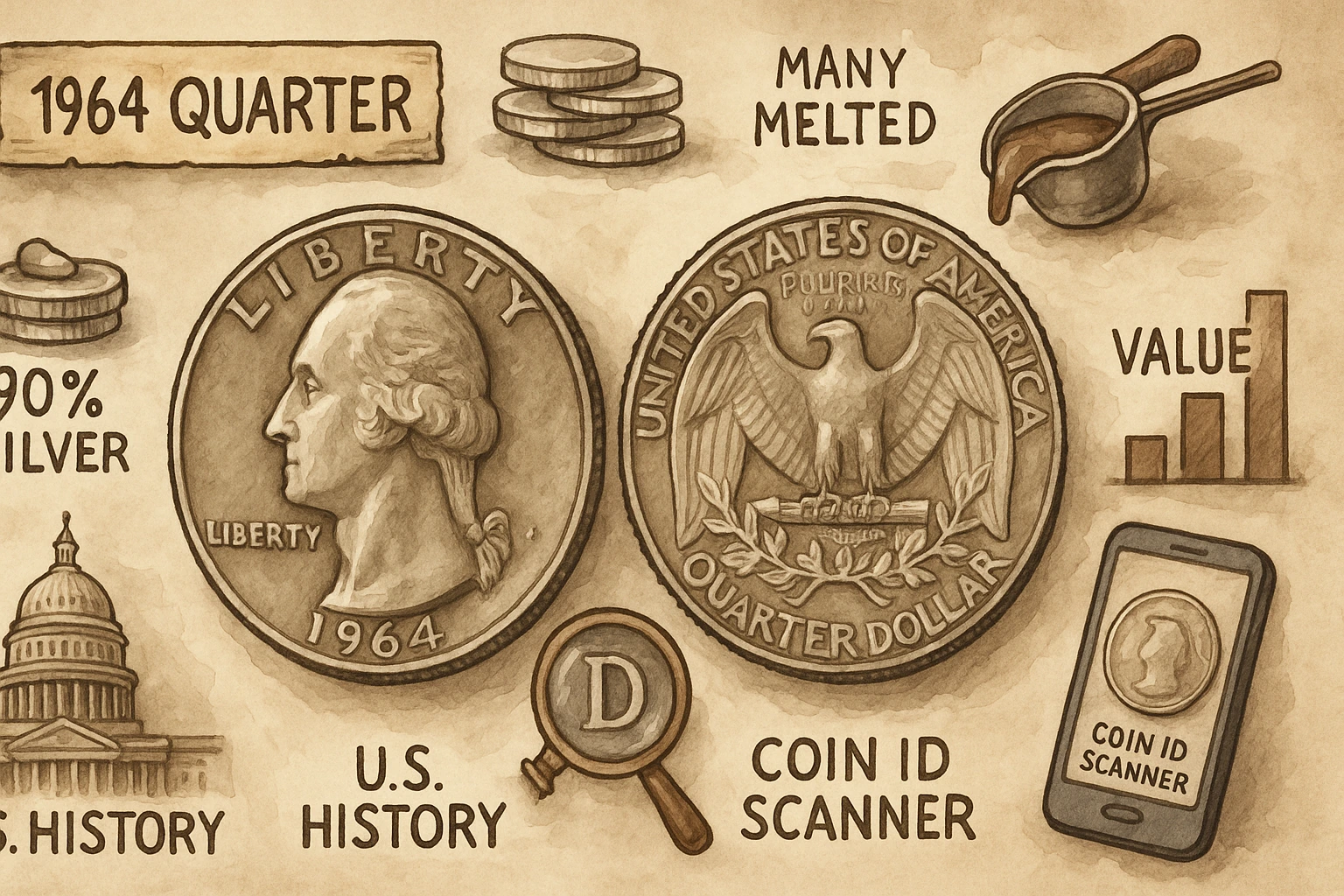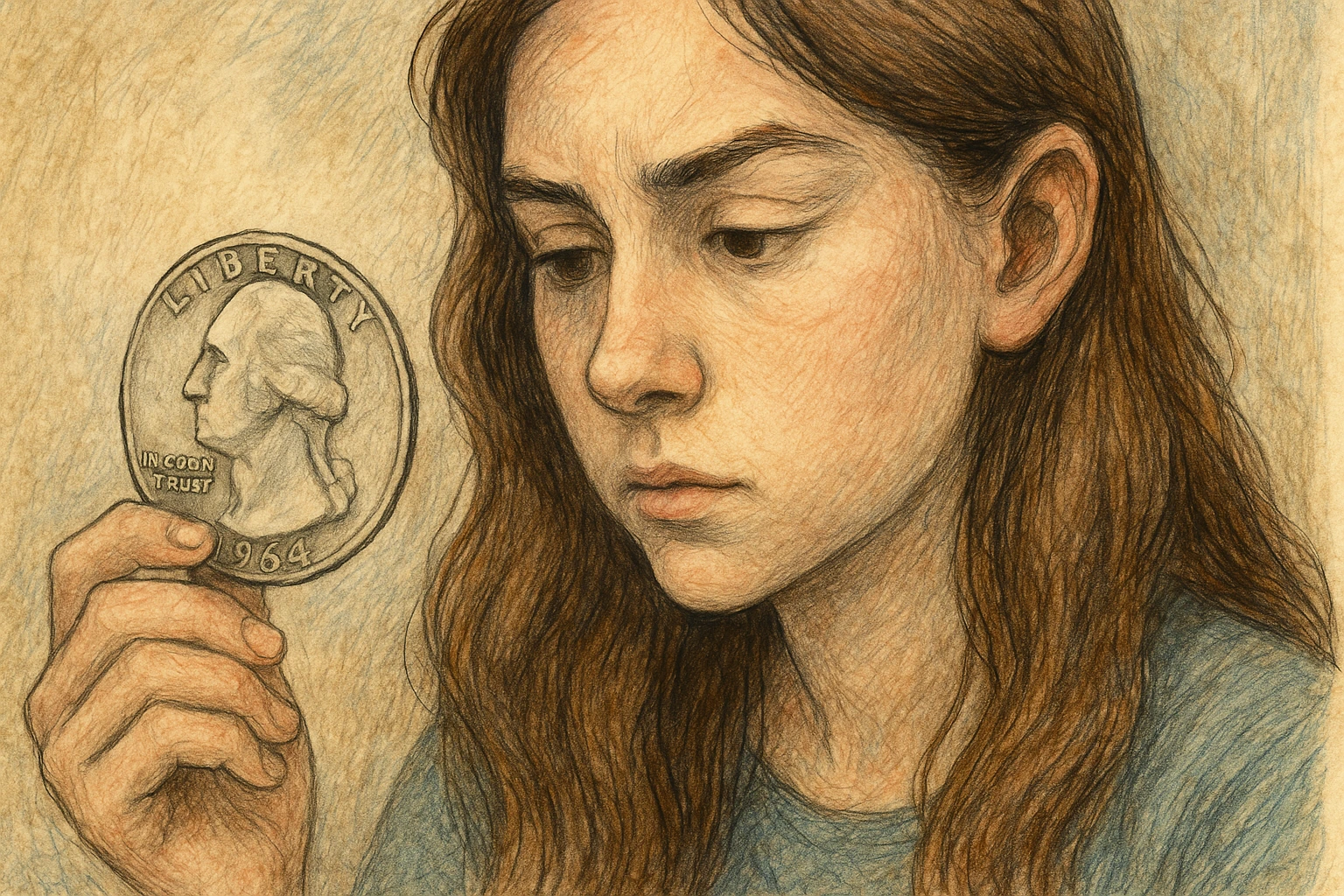If you’ve ever spotted an old quarter in a collection or inherited coin jar, chances are it was minted in 1964. Why that year? Because it’s the very last year U.S. quarters were produced with 90% silver content before the government transitioned to a copper-nickel clad format in 1965. This shift wasn’t just cosmetic; it was a response to rising silver prices and an effort to keep coins from being hoarded or melted.
Today, the 1964 quarter continues to capture the imagination of coin collectors and precious metal enthusiasts alike. It’s not just worth 25 cents—it’s a tangible relic of economic change, and in many cases, it can be worth far more.

Why the 1964 Quarter Is Special
Several factors contribute to the 1964 quarter’s unique standing in numismatic circles. Let’s explore why it remains one of the most talked-about coins among hobbyists and investors.
1. End of an Era
The most significant reason collectors cherish the 1964 quarter is its 90% silver composition. Beginning in 1965, quarters were made from a copper-nickel clad to reduce production costs and prevent silver hoarding. This means every 1964 quarter is essentially a small silver investment, with a melt value that fluctuates with global silver markets.
- Composition: 90% silver, 10% copper
- Weight: 6.25 grams
- Silver Content: 0.1808 troy ounces
As of 2025, with silver hovering around $34/oz, even a well-circulated 1964 quarter has a melt value of $6.15—over 24 times its face value.
2. Massive But Misleading Mintage
At first glance, the 1964 quarter appears common. After all, over 1.2 billion were minted—split between Philadelphia, Denver, and a small number of proof coins from San Francisco. But here’s the twist: millions were melted down in the years following their release, especially when silver prices surged. That’s why high-grade examples are much rarer than you’d think from the mintage numbers.
Breakdown of the 1964 quarter mintage:
| Mint | Symbol | Mintage | Notes |
| Philadelphia | (No Mark) | 560,390,585 | Common, but scarce in MS67+ |
| Denver | D | 704,135,528 | Most plentiful, known for high-grade rarities |
| San Francisco | S | 3,950,762 | Proof coins only, sought by collectors |
So while these coins aren’t scarce in general, their value climbs dramatically when condition and grade are factored in.
3. It’s Real Money—Still!
Unlike modern clad coins, the 1964 quarter retains intrinsic value thanks to its silver. It’s not just worth what someone will pay for it—it has a floor based on precious metal content. This makes it a favorite among silver stackers, who often collect rolls or bags of “junk silver” coins like the 1964 quarter.
Collecting the 1964 Quarter: Types, Mint Marks & Values
For collectors, the 1964 quarter is more than a silver coin—it’s a multifaceted collectible with variations that can dramatically affect value. From mint marks to pristine proof versions, here’s what to look for if you’re hoping to build—or appraise—a smart collection.
Mint Mark Significance
In 1964, three U.S. Mint facilities produced Washington quarters, each with slight differences that affect their desirability. Knowing where your quarter was minted can help you determine rarity, value, and potential errors.
Where to Find the Mint Mark:
On 1964 quarters, the mint mark is located beneath the eagle on the reverse, just above the “R” in “QUARTER DOLLAR.”
| Mint | Mint Mark | Description |
| Philadelphia | (No mark) | Standard circulation; over 560 million struck. Most common. |
| Denver | D | Found on the reverse. Over 700 million struck. Highest mintage. |
| San Francisco | S | Used only for proof coins, sold to collectors. Not meant for circulation. |
Value Breakdown by Type and Condition
While the melt value of a 1964 quarter is always based on its silver content, condition, rarity, and grading can raise prices significantly. Here’s how typical and high-grade versions are valued in today’s market:
| Type | Typical Value (Circulated) | Value (Uncirculated/Proof) | Record Prices & Notes |
| 1964 (No Mint Mark) | $5–$7 | $30–$65 (MS65+); up to $7,188 (MS67) | Common in low grade, scarce in top grade |
| 1964-D (Denver) | ~$6 | $30–$1,700 (MS65–MS67+); record $38,400 (MS68) | High values for pristine condition |
| 1964-S Proof | – | $15–$2,350 (PR68+ Deep Cameo) | 3.9M minted; ultra-high grades sought-after |
MS = Mint State (uncirculated); PR = Proof; Deep Cameo = Strong contrast between frosted design and mirrored fields
Factors that affect these values include:
- Strike sharpness
- Luster
- Eye appeal
- Absence of contact marks
- Professional grading (PCGS, NGC)
Notable Rarities and Errors
Beyond standard issues, the 1964 quarter series includes a few elusive treasures that turn up at auctions and in advanced collections. These error coins can command significantly higher prices due to their rarity and intrigue.
Transitional Error: 1964-D with 1965 Reverse
One of the most intriguing finds is the transitional error, where a 1964-D quarter was struck using the reverse die intended for 1965 clad quarters. The reverse design is subtly different, and this error is both rare and valuable—often fetching hundreds to thousands of dollars, depending on grade.
Doubled Dies & Repunched Mint Marks (RPMs)
Collectors also hunt for doubled die obverse (DDO) or reverse coins, where the design appears slightly doubled due to a misaligned die. These are subtle but valuable—some selling for $200–$2,000+.
Similarly, RPMs (Repunched Mint Marks) occur when a mint mark was stamped more than once, slightly off-position. These can bring in $50–$500 depending on condition.
Deep Cameos & SMS Mysteries
While no official 1964 Special Mint Set (SMS) exists, some unusual prooflike strikes have been discovered, leading some experts to speculate about experimental production or private mint errors. In any case, deep cameo proofs—where the coin’s frosted design pops against a mirror-like background—are highly prized.
Why These Coins Still Matter
These rarities aren’t just curiosities—they are key reminders of the minting technology of the era, the transition to clad coinage, and the beginning of silver hoarding in American households. For collectors, the 1964 quarter isn’t just a collectible—it’s a research subject, an investment, and a treasure hunt all in one.

How to Identify an Authentic 1964 Quarter
Before you assume your coin is worth a small fortune, it’s critical to ensure it’s genuine and correctly identified. Thankfully, 1964 quarters have very distinct characteristics that make them relatively easy to spot once you know what to look for.
Visual & Physical Traits
Use the checklist below to examine your coin carefully:
| Feature | Detail |
| Obverse Design | George Washington facing left, word “LIBERTY” above |
| Reverse Design | Heraldic eagle with spread wings, clutching arrows and olive branches |
| Mint Mark Location | Reverse side, beneath the wreath and above the “R” in “QUARTER DOLLAR” (except Philadelphia coins with no mark) |
| Weight | 6.25 grams |
| Diameter | 24.3 mm |
| Edge | Reeded (grooved) |
| Composition | 90% silver, 10% copper |
| Sound Test | Drop it gently on a wooden surface: a silver coin produces a clear, bell-like ring, unlike the dull clink of clad coins. |
These features distinguish the 1964 silver quarter from post-1965 clad versions, which are lighter, less valuable, and made of copper-nickel layers.
The Modern Collector’s Toolbox: Coin ID Scanner App
With millions of coins in circulation and endless variations, manually identifying and valuing coins can be time-consuming. That’s where Coin ID Scanner becomes indispensable—especially for coins like the 1964 quarter, which come with historical versions, proof types, and elusive errors.
Key Features for 1964 Quarter Collectors
| Tool | Benefit |
| Coin Identification by Photo | Snap a photo and get instant identification: year, mint mark, silver content, grade potential, and estimated value. |
| Detailed Coin Cards | Access official data such as diameter, weight, composition, edge type, and current price ranges. |
| Smart Filters | Filter results by metal type, country, mint year, and rarity. Ideal for identifying rare 1964-D errors or spotting high-grade proofs. |
| Digital Collection Management | Create a digital coin album, track value over time, and organize by year, metal, or rarity. |
| AI Coin Helper | Unsure if it’s an error coin? Ask the in-app AI for guidance or confirmation based on your coin image. |
| Extensive Database | Access a verified database of over 187,000 global coins. Includes obscure errors, deep cameo proofs, and collector pricing benchmarks. |
Whether you’re a beginner or seasoned numismatist, Coin ID Scanner simplifies your collecting journey and helps you avoid undervaluing what may be a rare coin in your hand.
The 1964 Washington quarter is more than just currency—it’s a silver echo from America’s numismatic past. Minted during a pivotal moment of economic transition, it offers collectors a tangible piece of U.S. history that combines precious metal value, nostalgic design, and endless opportunities for discovery.
For some, it’s a gateway into the hobby. For others, it’s a vault of hidden value waiting in old coin rolls or family heirlooms. But for everyone, it’s proof that even a modest quarter can tell a fantastic story—etched in silver, worn by time, and now made searchable with modern tools like Coin ID Scanner.
So next time you spot a weary old coin, don’t dismiss it. Examine it. Scan it. Celebrate it. It just might be a 1964 quarter—more valuable than it looks, and far more fascinating than you’d expect.
